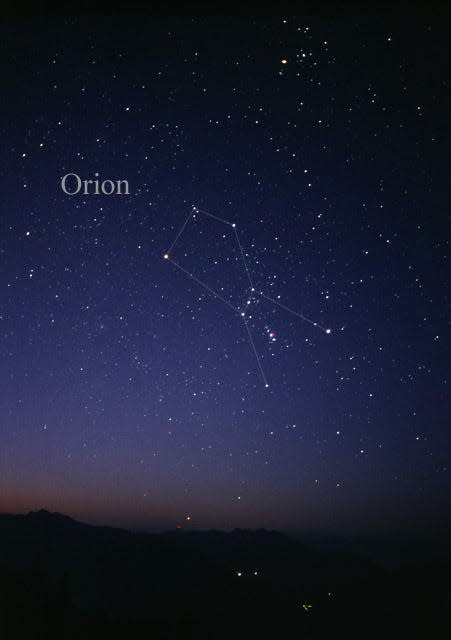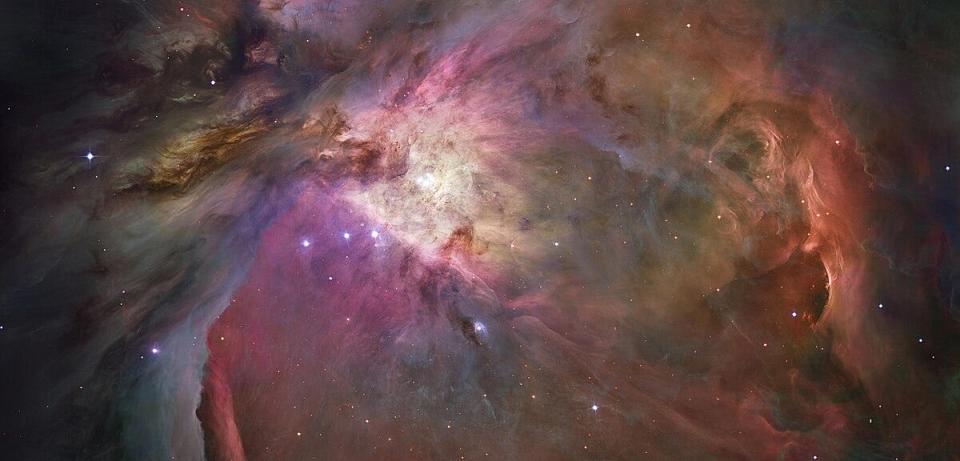Looking Up: Orion, Geminid meteor shower can be seen in December's starry Pocono sky
The famous and bright constellation Orion the Hunter is prominent all winter and can be seen the next clear evening. As seen from mid-northern latitudes like in the Poconos, Orion is tilted, as if balancing on one foot.
Coming soon is the spectacular Geminid meteor shower on Dec. 14-15, the strongest regular display of meteors of the year.
All of this is enough to inspire many of us to bundle up and go outside for a pre-winter season under the stars.
It may not be the Christmas Star, but Jupiter is very bright right now, shining high in the southeast in the early evening and dominating the southern sky by 11 p.m. Binoculars, held steady or supported by a tripod or some stable, sold support, should reveal at least a couple of Jupiter’s four brightest moons. They will appear like faint stars very close to Jupiter.
It may be cold out at night this time of year, but on the other hand, you need not wait up to see the stars. With the first day of winter approaching here (Dec. 21) we can enjoy the stars of early evening as well as venture out late when most people have settled down for a sleep, and there are fewer glaring lights to compete with starlight beaming down.

Around 8 p.m., Orion has fully risen, just above the eastern horizon. This early in the season, it takes until around midnight to see Orion high in the south. In January and February, it will be in the south much earlier.
Its principal stars form a tall, misshaped rectangle, framing Orion's body, with three stars in a neat, tilted row in the middle defining his belt. On the left side is his "sword," a shorter line we can imagine to be hanging down from the belt as if its weight is making his belt slide. Look for what appears like a fuzzy star in the middle of the sword. This is M42, the Great Nebula of Orion, a grand patch of cloud where stars are forming. On a moonless night binoculars bring out much of the nebula’s form; a telescope can provide outstanding views.
The two stars on the bottom of the rectangle, Orion's "feet," include the brilliant star blue-white Rigel at right. The top two stars are Orion's "shoulders." At left is his most famous star, the brilliant, fiery red supergiant star, Betelgeuse. Another star making a triangle with the shoulder stars marks Orion's head.
A winter constellation map, available in general astronomy books in likely any public library as well as online, will help you trace the bright constellations near Orion, containing several very bright stars. The brightest of the night sky, blue-white Sirius, is to the lower left of Orion and is one of the nearest to our sun, its light taking only eight years to reach us.

Hoping for a clear night Dec. 14-15, be sure to look for the spectacular Geminid meteor shower. Under ideal conditions one might see as many as 120 an hour, but the best meteor watching is after midnight. That is when we are on the forward-side of the Earth as it moves in its orbit, plowing head-long into the stream of meteoric particles making up the Geminids.
Still, you can expect to see some of these meteors in the evening. They appear to radiate from a point in the constellation Gemini, which is to the upper left of Orion. This constellation will already be halfway up in the east by 9 p.m. Like with any meteor shower, the meteors can be seen anywhere in the sky, but true shower members can be traced back to the radiant.
How many you see involves patience. Dress extra warm! Try bundling up in a sleeping bag on a reclining lawn chair, rather than straining your neck for extended periods waiting for meteors. A wide-open sky will show more. No binoculars or telescope are needed.
Of course, enjoy the moon this month. The last quarter is on Dec. 5; new moon is Dec. 12; first quarter, Dec. 19, and full moon, Dec. 26.
Keep looking up at the sky!
Peter Becker has worked at the Tri-County Independent or its predecessor publications since 1994. Reach him at pbecker@tricountyindependent.com or 570-253-3055 ext. 1588.
This article originally appeared on Tri-County Independent: Looking Up: See Orion, Geminid meteor shower on clear December nights

